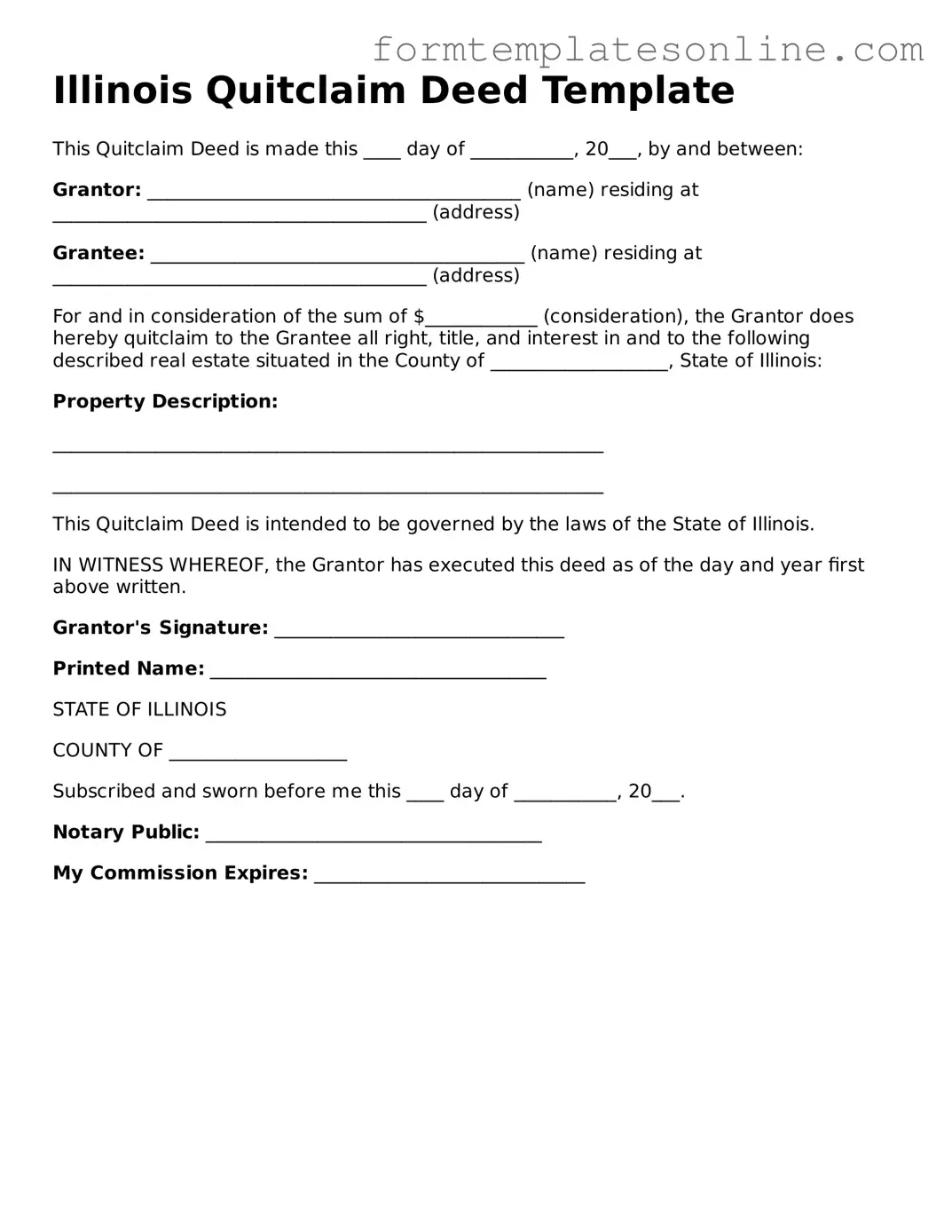What is a Quitclaim Deed in Illinois?
A Quitclaim Deed is a legal document used to transfer ownership of real estate from one party to another. In Illinois, this form allows the current owner, known as the grantor, to convey their interest in the property to the new owner, known as the grantee. It is important to note that a Quitclaim Deed does not guarantee that the grantor has a valid title to the property; it simply transfers whatever interest the grantor may have.
When should I use a Quitclaim Deed?
This type of deed is often used in situations where the parties know each other, such as transferring property between family members or during a divorce. It is also used to clear up title issues or to add or remove a name from the property title without a sale taking place.
What information is required on the Illinois Quitclaim Deed form?
The form must include the names and addresses of both the grantor and grantee, a legal description of the property, and the date of the transfer. Additionally, the form requires the grantor's signature, which must be notarized, to make the deed legally valid.
Is a Quitclaim Deed the same as a Warranty Deed?
No, a Quitclaim Deed is not the same as a Warranty Deed. A Warranty Deed offers guarantees about the title and ensures that the grantor has the right to transfer the property, while a Quitclaim Deed does not provide such assurances. It simply transfers whatever interest the grantor may have, if any.
Do I need to file the Quitclaim Deed with the county?
Yes, after the Quitclaim Deed is signed and notarized, it must be filed with the appropriate county recorder’s office where the property is located. Filing the deed officially records the change of ownership and protects the rights of the new owner.
Are there any fees associated with filing a Quitclaim Deed in Illinois?
Yes, there are typically fees associated with filing a Quitclaim Deed. The exact amount can vary by county, so it is advisable to check with the local recorder’s office for the specific fee schedule. Additionally, there may be other costs, such as notarization fees.
Can I revoke a Quitclaim Deed once it is filed?
Once a Quitclaim Deed is filed and recorded, it cannot be revoked or undone unilaterally. If the grantor wishes to regain ownership, they would need to execute a new deed transferring the property back, which may require the consent of the grantee.
What happens if the Quitclaim Deed is not properly executed?
If the Quitclaim Deed is not properly executed—meaning it lacks the necessary signatures, notarization, or legal description—it may be deemed invalid. This could lead to complications in property ownership and title disputes, making it essential to ensure all requirements are met before filing.
Can I use a Quitclaim Deed to transfer property into a trust?
Yes, a Quitclaim Deed can be used to transfer property into a trust. This is a common practice for estate planning purposes. The grantor would execute the Quitclaim Deed, naming the trust as the grantee, thereby transferring ownership of the property to the trust.
Do I need an attorney to complete a Quitclaim Deed?
While it is not legally required to have an attorney to complete a Quitclaim Deed, consulting with one is highly recommended. An attorney can help ensure that the deed is properly executed and that all legal requirements are met, thereby minimizing the risk of future disputes or issues with the property title.
